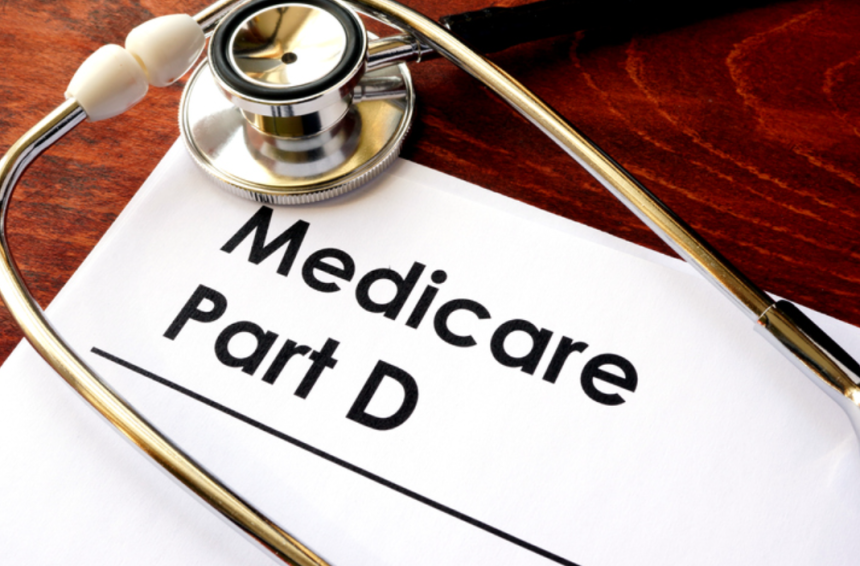Millions of senior citizens in America have benefited greatly from Medicare Part D, which offers prescription medication coverage for Medicare beneficiaries. The program has had a significant effect on beneficiaries’ economic and health outcomes since it began in 2006.
Medicare Part D has influenced how elder healthcare is provided, from lowering out-of-pocket costs to enhancing medication adherence. This blog will look at the effects of Part D on the economic and health results of Medicare beneficiaries and why this program is so important for the welfare of senior citizens.
So, let’s begin and first explore what Medicare Plan Part D is.
What is Medicare Plan Part D?
People who are enrolled in Medicare are covered by the government program known as Medicare Part D for their prescription medication needs. It was established in 2006 because of the Medicare Modernization Act (MMA), and its purpose is to assist recipients with the cost of their prescription medications.
Private insurance providers that have contracts with the federal government to provide coverage for prescription drugs give Part D.
Medicare beneficiaries must have Parts A and/or B of Medicare or a Medicare Advantage plan (Part C) with prescription medication coverage in order to enroll in Part D. Beneficiaries are required to sign up for Part D during their Initial Enrollment Period, a seven-month window that starts three months before their 65th birthday and concludes three months after their actual birthday. Additionally, they may sign up throughout the Annual Enrollment Period, which runs from October 15 to December 7 each year.
For each prescribed drug, Part D plans require copayments or coinsurance in addition to a monthly premium and deductible. Depending on the beneficiary’s choice of plan and salary level, the premium and deductible amounts change. Extra Help, a program that assists in covering Part D premiums, deductibles, and copayments, may be available to beneficiaries with restricted resources and income.
A formulary, or inventory of medications that the plan covers, is a feature of Part D plans. smaller tiers of the formulary’s tier system have smaller cost-sharing requirements than higher tiers do. The formulary of the plan allows beneficiaries to evaluate the prices of their prescription drugs and choose the one that offers the most affordable coverage for their medications.
In conclusion, Medicare Part D is a government program that offers beneficiaries of Medicare prescription drug coverage. It is provided by commercial insurers that have agreements with the federal government to sell this insurance. Depending on the plan they select, beneficiaries must pay a monthly premium, a deductible, and copayments or coinsurance for their prescribed medications.
Impact of Part D on Medicare Beneficiaries’ Health and Economic Outcomes
Part D has had a significant positive effect on the health and financial outcomes for Medicare beneficiaries, leading to increased medication access, better medication adherence, lower out-of-pocket costs, and an improvement in general health and wellbeing.
Beneficiaries can use resources like https://www.comparemedicaresupplementplans.org/, which provides plan comparison tools and resources on navigating the Part D coverage gap and Extra Help program, to make informed choices about their Part D coverage options. Resources like Medicarepartdplans.org can ensure that recipients are making the most of their coverage, and Part D has overall improved the health and financial outcomes of beneficiaries.
Since its inception in 2006, Medicare Part D has had a significant effect on the health and financial outcomes of Medicare beneficiaries. The following are some effects that Part D has had on beneficiaries:
Improved Prescription Adherence
One of Part D’s main advantages is that it has assisted in increasing beneficiaries’ prescription compliance. Many beneficiaries had to pay the entire cost of their prescription medications out-of-pocket before Part D went into effect. Because they could not afford their medicines, many beneficiaries did not take them as directed. Beneficiaries can now afford prescription medications thanks to Part D, which has improved medication compliance and enhanced health outcomes.
Reduced Out-of-Pocket Costs
Part D has also assisted in lowering recipients’ out-of-pocket costs. Many beneficiaries were required to pay the entire cost of their prescription medications out-of-pocket prior to the implementation of Part D. Beneficiaries have access to insurance protection through Part D, which serves to lower the cost of their prescription medications. For many recipients, this has made paying for healthcare expenses less expensive.
Increased Access to Medications
Beneficiaries now have easier access to prescribed drugs thanks to Part D. Beneficiaries now have access to more prescription medications than they did prior to the introduction of Part D thanks to the program’s extensive formulary. By ensuring that beneficiaries have access to the medications they require, this has served to improve their health outcomes.
Improved Overall Health
Part D has on the whole, improved beneficiaries’ health results. Beneficiaries’ health outcomes have been improved by Part D by increasing access to medications, enhancing prescription adherence, and decreasing out-of-pocket costs. As a result, hospital stays and other healthcare expenses have decreased, improving the recipients’ general health.
Reduced Economic Burden
Part D has also assisted beneficiaries in lessening the financial load of paying for healthcare. Many beneficiaries had to pay the full cost of their prescription medications out-of-pocket prior to the implementation of Part D, which could be a substantial financial burden. Beneficiaries have access to insurance protection through Part D, which serves to lower the cost of their prescription medications. For many beneficiaries, this has made paying for healthcare expenses easier, which has improved their fiscal outcomes.
To sum it up, Medicare Part D has had a big effect on how well Medicare beneficiaries are doing financially and health-wise. Part D has aided in enhancing beneficiaries’ general health and wellbeing by enhancing drug adherence, decreasing out-of-pocket costs, increasing access to medications, and lessening the financial burden of healthcare costs.
Conclusion
In conclusion, since its implementation in 2006, Medicare Part D has had a favorable effect on the health and financial results of Medicare beneficiaries. It has increased access to medications, improved medication adherence, decreased out-of-pocket costs, and lessened the financial burden of healthcare expenditures. Beneficiaries’ general health and well-being have improved as a result of these advantages, which have also assisted in lowering healthcare expenses. It is important to recognize the significance of Medicare Part D as an essential program for the welfare of senior citizens in the United States.















